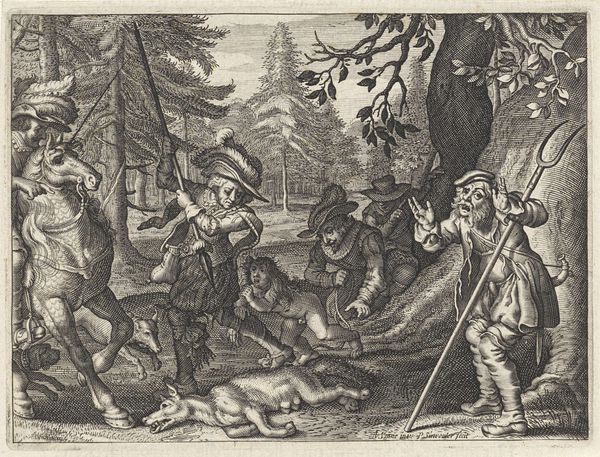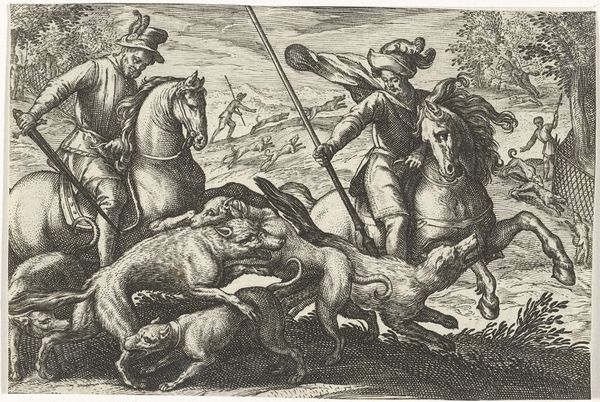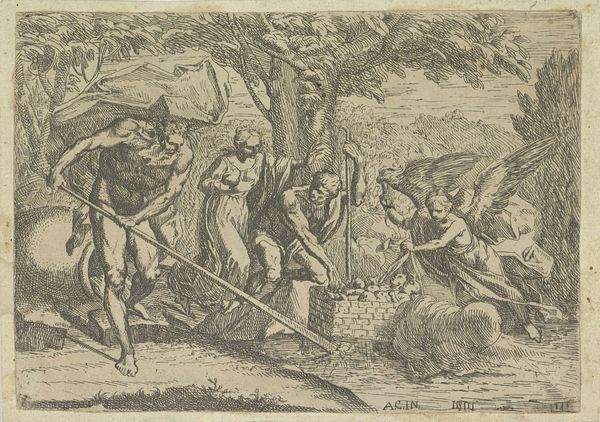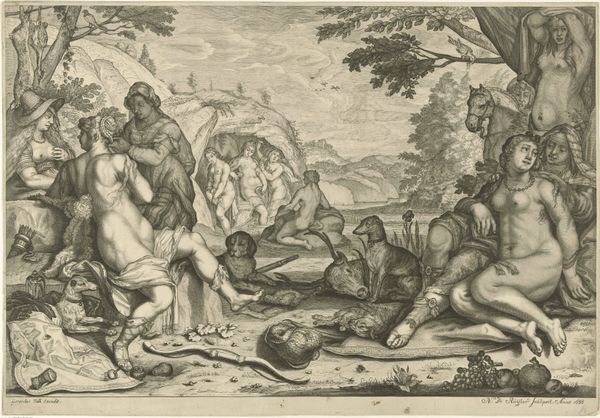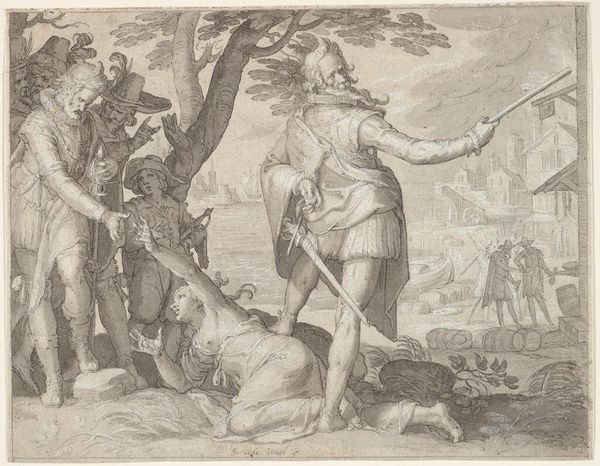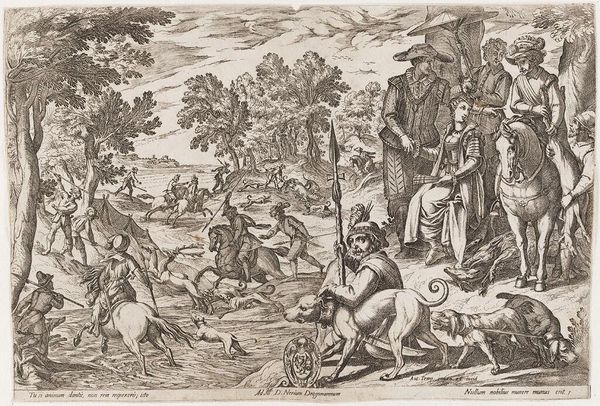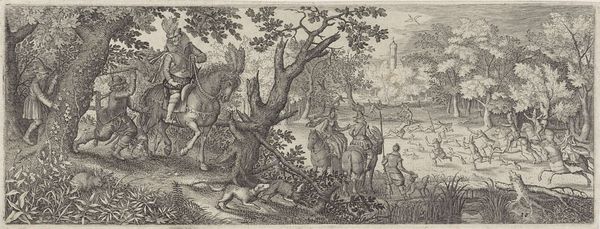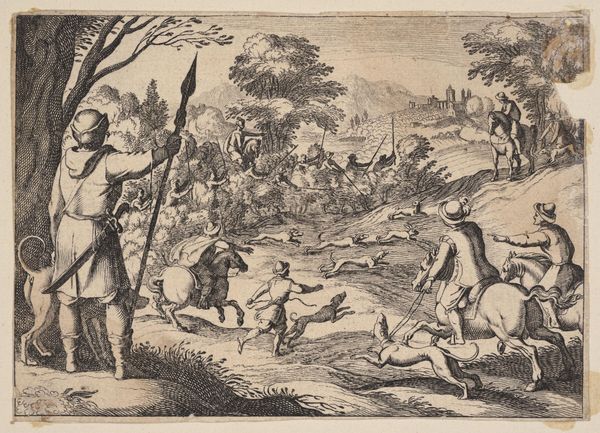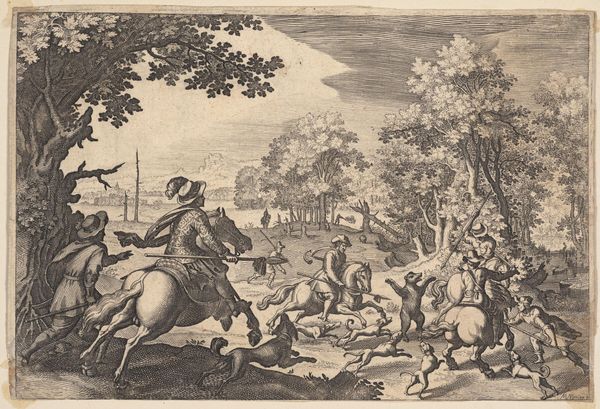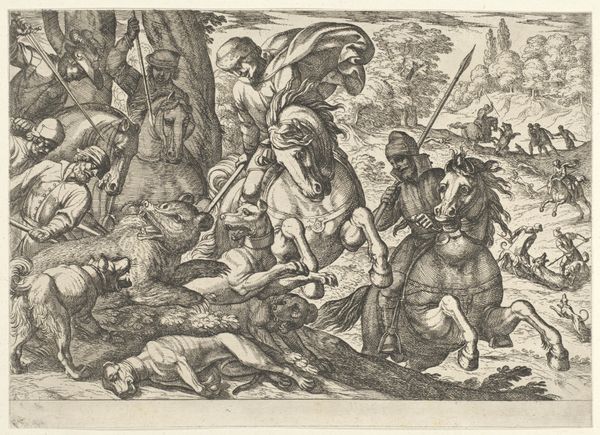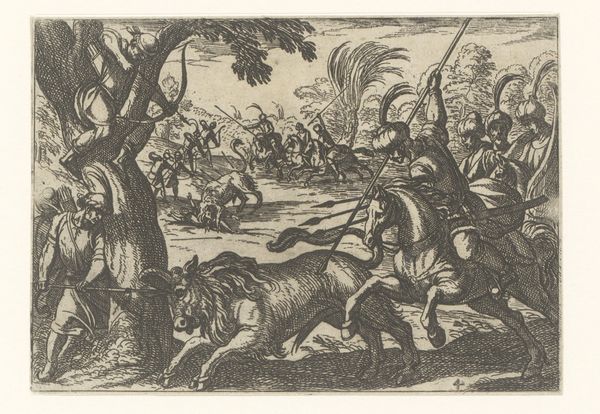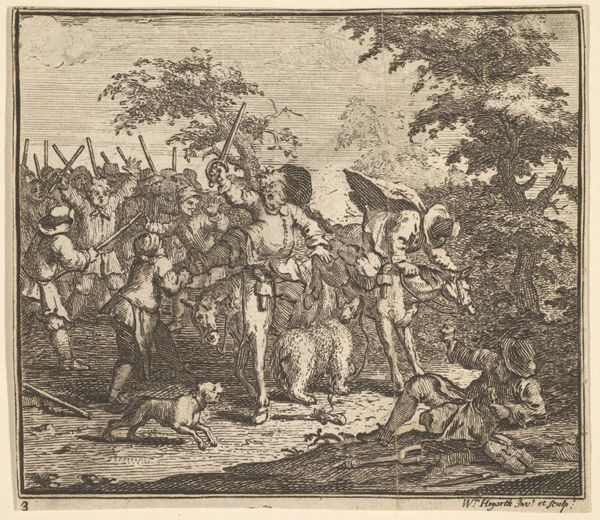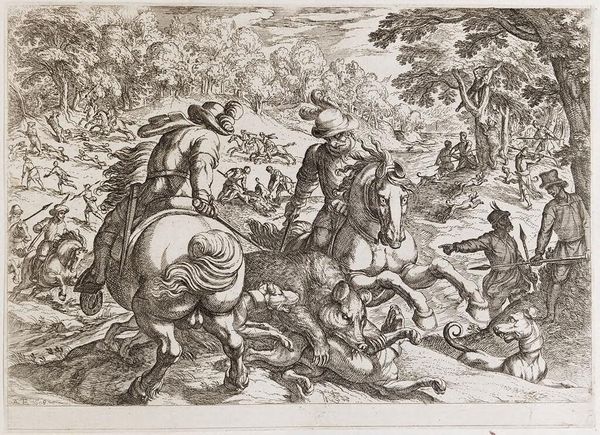
print, engraving
#
narrative-art
#
pen drawing
#
dutch-golden-age
# print
#
pen illustration
#
pen sketch
#
landscape
#
figuration
#
genre-painting
#
engraving
Dimensions: height 102 mm, width 137 mm
Copyright: Rijks Museum: Open Domain
Curator: I am immediately struck by the flurry of lines here; there’s a dynamic energy that makes my eyes dart across the composition. Editor: Precisely. Today, we’re examining "Wolvenjacht," a print made around 1642 by Pieter Serwouters. The technique involves engraving and using a pen to capture an exhilarating scene. Curator: Exhilarating, perhaps, for some! To me, the frenzy actually feels quite troubling. There is a clear tension between the hunters and their prey— the wolf now lifeless in the lower quadrant. Hunting, particularly wolves, historically intersects with power, control, and the taming of wild spaces—issues that ripple through narratives of gender and race, as well. Editor: Well, if we consider the historical period in which Serwouters was working, in the midst of the Dutch Golden Age, this wasn’t unusual. His skill as a draftsman is also worth mentioning here. Look closely at how he manages the cross-hatching to give volume to both the figures and the densely packed trees. His use of engraving and pen illustrate the Dutch expertise in printmaking at the time. Curator: The print medium also points to wider dissemination and consumption of this hunting narrative. These images affirmed social order, where man dominated nature. Who were the intended consumers and what socio-political assumptions do those buying decisions reveal? What beliefs or anxieties does it assuage to view animals being controlled in the forests surrounding the cities and farms? These visual displays are rarely benign, and should always encourage questioning. Editor: I see your point. It reflects not just a genre scene, but indeed certain value judgments too. Yet in a straightforward technical sense, the controlled lines allow a range of textures and forms, reflecting observation from nature, a skilled artisanal practice that reflects value. The layered landscape gives both depth and allows room for multiple small narrative details, like the alarmed spectators. Curator: I suppose what fascinates and concerns me, is not simply that the piece is well-executed, but rather what this particular technical prowess enabled the propagation of during that specific era and also across generations as we continue to gaze at these images now. Editor: Fair enough. I would conclude by observing how close examination reveals social and aesthetic hierarchies implicit within everyday materials.
Comments
No comments
Be the first to comment and join the conversation on the ultimate creative platform.
